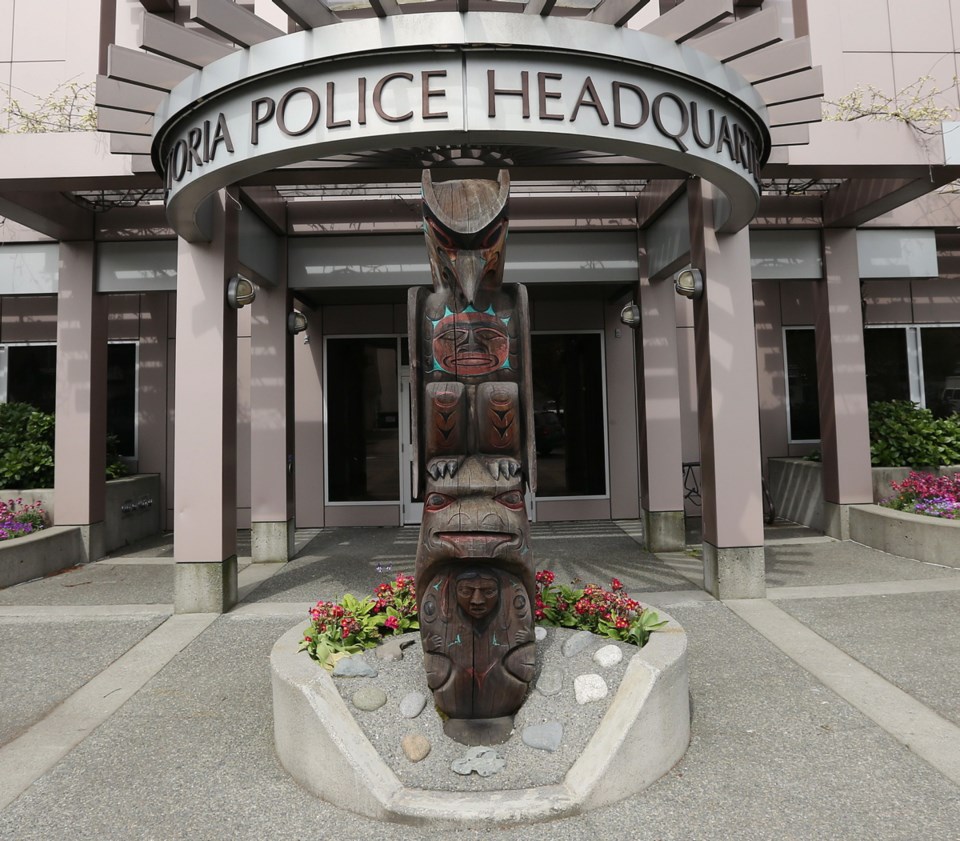Councils have the unenviable job of deciding how much tax money goes to support the safety and well-being of their community.
During the next few months, it will be particularly challenging for the 40 per cent of 91 politicians in the region who will have the task of scrutinizing a police budget for the first time. We will see if the election-trail promises about making life more affordable was just talk.
So, is a 6.01 per cent increase in the VicPD budget for 2019 affordable and sustainable for taxpayers?
VicPD already has 233 officers — covering Victoria and Esquimalt — the highest number of police officers per 100,000 residents in Canada. The costs per capita are also considerably more than all other municipalities in British Columbia, and almost 20 per cent more than the municipality of Vancouver.
Perhaps it comes down to a public perception of crime that’s much different from reality.
There’s a huge disconnect with what we see on Law and Order, CSI and Happy Valley, and what’s actually going on in Greater Victoria.
Crime is a compelling and easily obtainable story for the media — “if it bleeds it leads” — and it often gets prominent coverage. We witness the horrific crime in the United States in the news daily. Understandably, if someone is victimized anywhere, the impact can be considerable and people hear about it.
Often, the budget decision depends on a wobbly numbers game — local, regional, provincial and national crime statistics — when arguing for a boost.
Locally, VicPD weighs in with its numbers, arguing there’s a need for 12 new staff and more than $3.2 million on top of the existing $54.3-million budget.
Last year, Esquimalt twice refused a budget-increase request for six additional officers. This issue has gone to the province to rule on, likely within the next couple of months. This year, the police are asking for five more officers and a support staff member.
Regionally, in the census metropolitan area of 377,500 in Greater Victoria, the crime rate is down 39 per cent in the past 10 years. The crime-severity rate is down 42 per cent, according to Statistics Canada.
Provincially, the 10-year downward trend in crime is also reflected in the statistics. The crime rate for Victoria and Esquimalt, the area covered by VicPD, dropped from 2008 to 2017 by 36.2 per cent, according to the province.
Nationally, crime rates have dropped by 23 per cent during the past 10 years. Crime rate is the number of Criminal Code offences (excluding traffic) reported for every 1,000 persons.
As a response to falling crime rates, most councils in larger communities in Canada have trimmed or held the line on the number of police officers.
Of the 50 standalone police departments and RCMP detachments in cities with more than 100,000 people last year, just eight saw increases in their overall police strength from the previous year, according to a recent Statistics Canada study. Thirty-one saw decreases, while 11 reported no significant change, the study found.
Proponents argue that VicPD polices the core area of Victoria and Esquimalt and consequently is disproportionately affected by social issues, including the often-interrelated problems of homelessness, substance abuse and mental health. Tourists, bars and heavy traffic flows from the region and beyond add to the workload.
Then again, Vancouver is also affected by regional social issues, tourists, bars and heavy traffic flows, yet employs 15 per cent fewer police per 100,000 residents.
There are pressing needs in a community in addition to policing.
The existing Victoria/Esquimalt policing budget of $54.3 million represents 22.5 per cent of the city’s operating budget — a percentage that hasn’t changed much since 2012.
In 2016, other comparable jurisdictions include New Westminster (13.8 per cent), Vancouver (19.2 per cent), Abbotsford (20 per cent) and Saanich (18.8 per cent), all of which continue to spend a smaller percentage of their operating budget.
Grumpy Taxpayer$ asks questions: How much as a community do we want to pay for policing? Should the legislative precinct — Victoria police were recruited to escort the ousted clerk and sergeant-at-arms from the legislature — or CRD be tapped for services rendered?
Could police paperwork be reduced? Why aren’t more lower-cost civilian employees utilized? Why not reallocate resources for foot patrols downtown? How much money would be saved by the consolidation of VicPD and Saanich Police Department?
Protecting citizens is a fundamental duty of council and arguably the most important decision they make.
In the end, police and emergency-services budgets are to municipalities, what health-care costs are to the province.
Stan Bartlett is the chair of Grumpy Taxpayer$ of Greater Victoria, a non-partisan advocacy group dedicated to lower taxes, less waste and more accountable municipal government.



